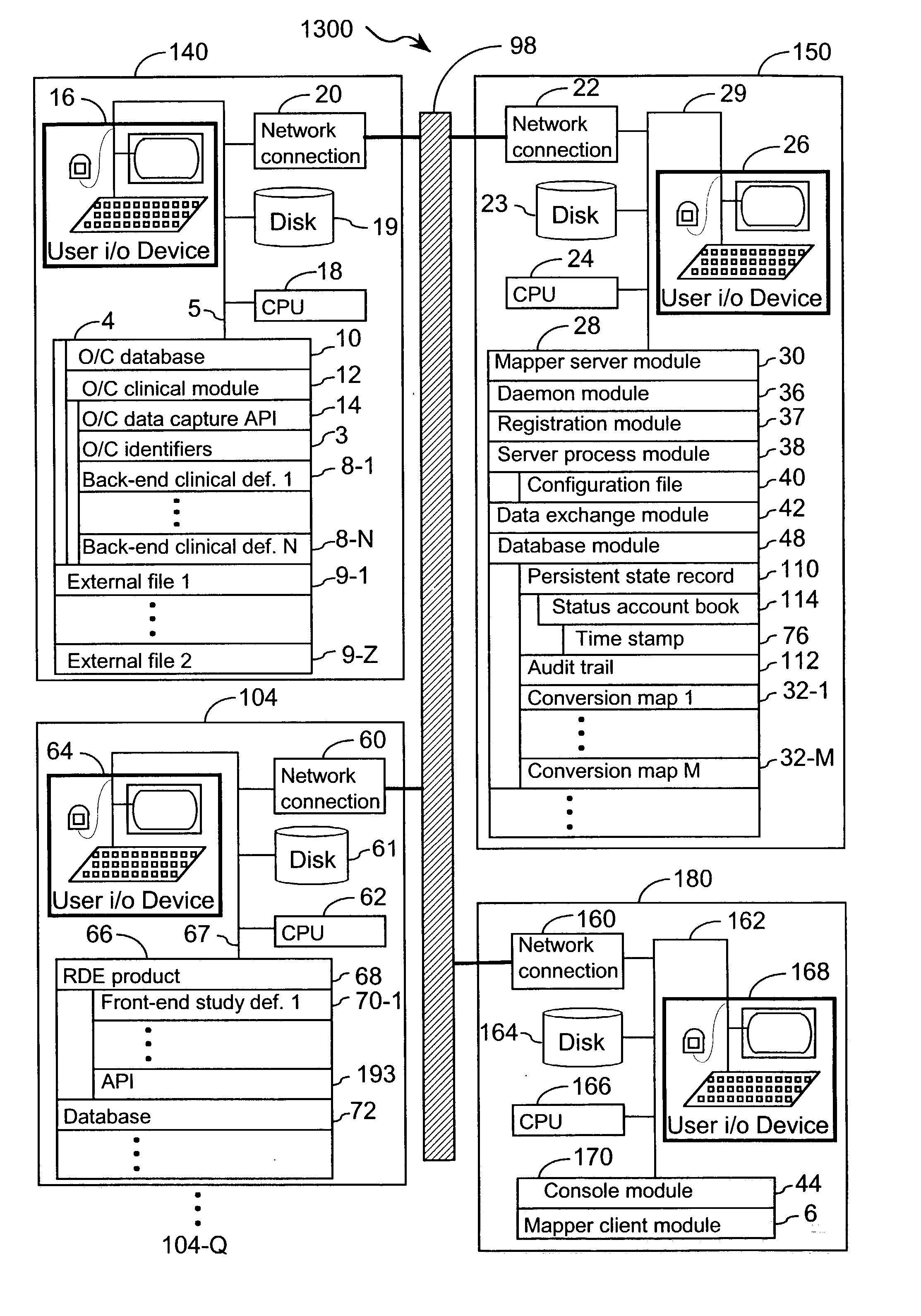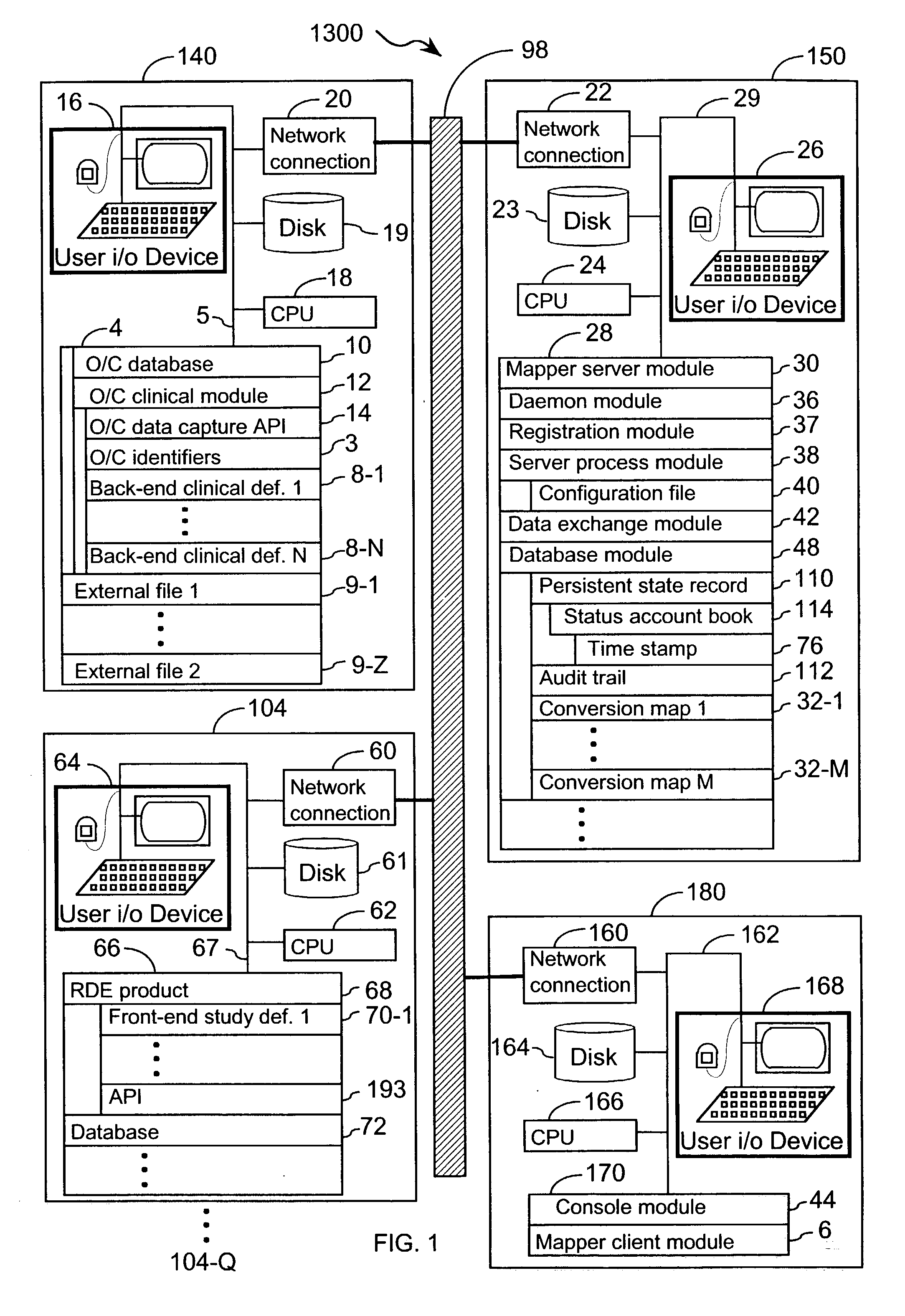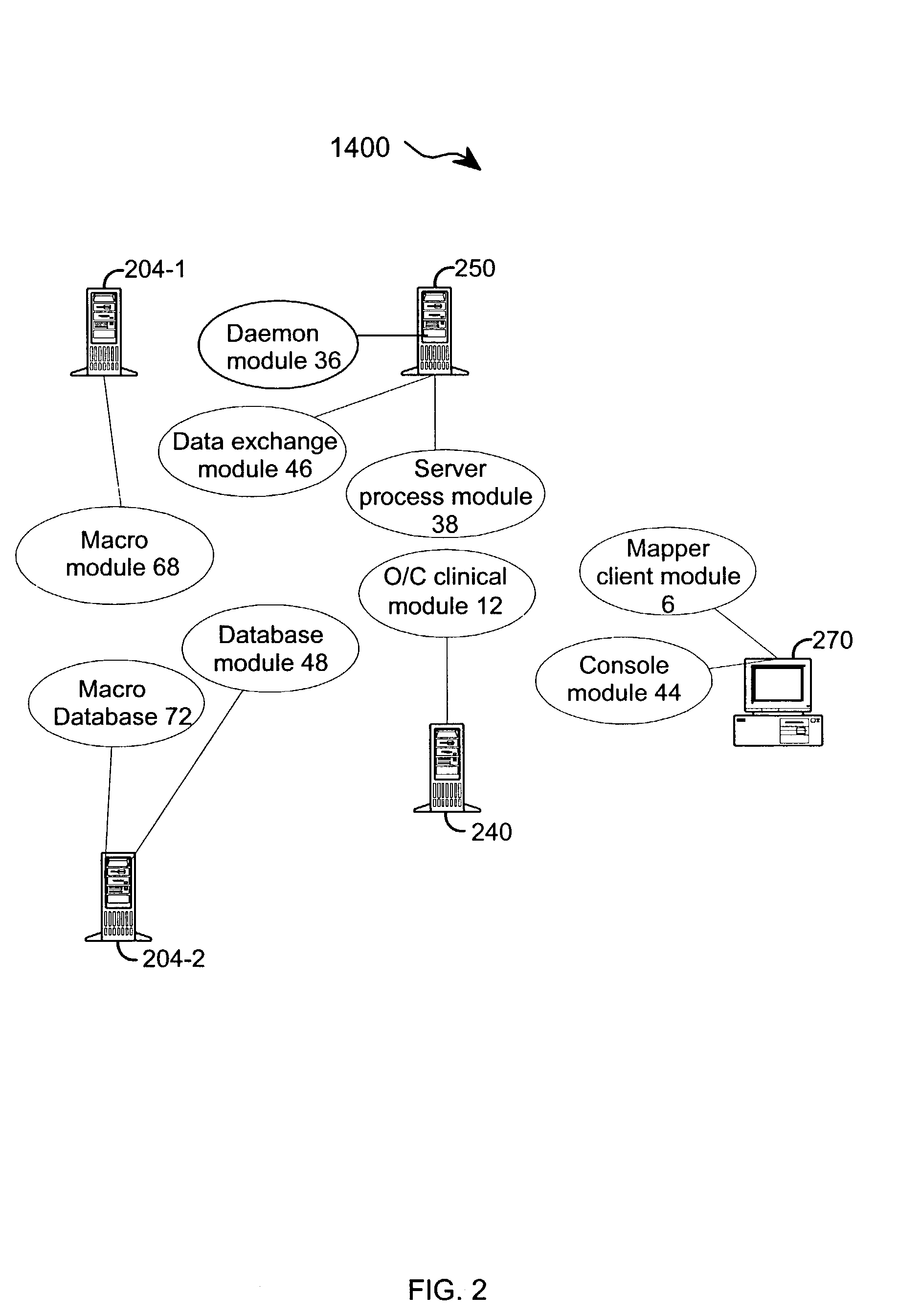System and method for resolving a discrepancy in a clinical data management system
discrepancy technology, applied in the field of system and method for resolving a discrepancy in a clinical data management system, can solve the problems of patient data disqualification, difficult to consult the clinician, and the presentation of statistically significant clinical trial data
- Summary
- Abstract
- Description
- Claims
- Application Information
AI Technical Summary
Benefits of technology
Problems solved by technology
Method used
Image
Examples
Embodiment Construction
[0048] The present invention provides an apparatus and method for integrating front-end data collection systems with a back-end CDMS such as Oracle Clinical. The present invention orchestrates bi-directional conversion and transportation of data, metadata, and process data between front-end data collection systems and back-end clinical data management systems. The present invention is capable of operating continuously at a plurality of back-end data warehousing sites. A number of aspects of the instant invention are accessible via open application program interfaces ("API"). In addition, the present invention provides an API that acts as a client to front-end data collection systems as well as an additional API that acts as a client to the back-end CDMS.
[0049] In one embodiment, the present invention provides an interface between a front-end data collection system having Remote Data Entry capabilities, such as MACRO from InferMed, Ltd., London UK, with a legacy back-end CDMS, such a...
PUM
 Login to View More
Login to View More Abstract
Description
Claims
Application Information
 Login to View More
Login to View More - R&D
- Intellectual Property
- Life Sciences
- Materials
- Tech Scout
- Unparalleled Data Quality
- Higher Quality Content
- 60% Fewer Hallucinations
Browse by: Latest US Patents, China's latest patents, Technical Efficacy Thesaurus, Application Domain, Technology Topic, Popular Technical Reports.
© 2025 PatSnap. All rights reserved.Legal|Privacy policy|Modern Slavery Act Transparency Statement|Sitemap|About US| Contact US: help@patsnap.com



